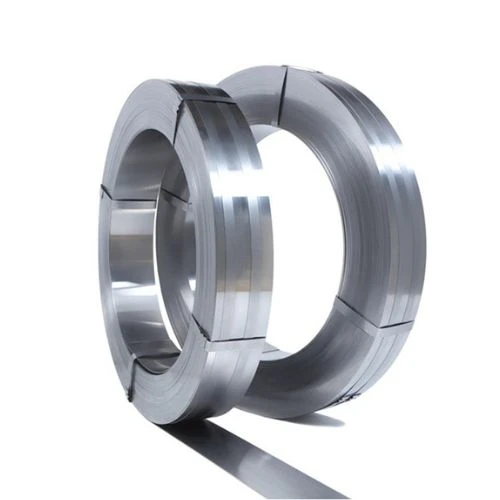- Phone:+86-17331948172 +86-0319-8862898
- E-mail: inquiry@puxingclamp.com
Nov . 23, 2024 22:55 Back to list
Durable Hose Clamps for High-Pressure Applications in Various Industries
Understanding High-Pressure Hose Clamps Essential Components for Fluid Management
High-pressure hose clamps play a crucial role in various industrial applications, ensuring that hoses remain securely fastened and leak-free under demanding conditions. These clamps are specially designed to handle the high-stress environments often encountered in hydraulic systems, automotive applications, and heavy machinery. In this article, we will dive deeper into the significance of high-pressure hose clamps, their types, materials, installation tips, and maintenance practices.
What Are High-Pressure Hose Clamps?
High-pressure hose clamps are devices used to secure hoses and fittings in place, preventing leaks and maintaining the integrity of fluid transfer systems. Unlike standard hose clamps, high-pressure clamps are specifically engineered to withstand elevated pressure levels, ensuring operational safety and efficiency. They are typically employed in applications involving liquids or gases under pressure, making their performance paramount in preventing failures that could lead to costly repairs or safety hazards.
Types of High-Pressure Hose Clamps
There are several types of high-pressure hose clamps, each suited for specific applications and requirements
1. Band Clamps Often used in industrial settings, band clamps provide a strong clamping force and can accommodate various hose sizes. They usually consist of a single band of metal that wraps around the hose and is tightened using a screw mechanism.
2. Screw Clamps This type features a threaded screw that pulls the band tighter as it is turned. Screw clamps are easy to install and remove, making them a time-efficient choice for frequent maintenance tasks.
3. Ear Clamps These clamps are crimped onto the hose and do not require a screw for tightening. Ear clamps provide a tight grip, making them ideal for high-pressure applications but necessitating specialized tools for installation and removal.
4. V-Band Clamps Used primarily in exhaust systems and turbochargers, V-band clamps offer a robust connection between two flanged components. They provide a secure seal, which is essential in high-pressure exhaust applications.
5. Spring Clamps These are self-adjusting clamps that use a spring mechanism to maintain constant pressure on the hose. They are commonly employed in automotive applications where vibration and temperature fluctuations are common.
Materials Used in High-Pressure Hose Clamps
The choice of material significantly influences the performance of hose clamps under high-pressure conditions. Common materials include
high pressure hose clamps

- Stainless Steel Known for its corrosion resistance and durability, stainless steel is a popular choice for high-pressure applications
. It can withstand harsh environments, making it ideal for chemical processing or marine applications.- Carbon Steel Though less resistant to corrosion than stainless steel, carbon steel clamps are stronger and often used in applications where high strength is required. They are typically zinc-coated for added rust protection.
- Plastic and Composite Materials In specific applications where weight is a concern or resistance to certain chemicals is necessary, plastic or composite hose clamps may be used. These materials can provide adequate performance at lower pressures.
Installation Tips for High-Pressure Hose Clamps
Proper installation is crucial for the effectiveness of high-pressure hose clamps. Here are some tips
1. Choose the Right Size Ensure that the clamp is the correct size for the hose to prevent slippage or excessive squeezing, which can damage the hose.
2. Clean the Surface Before installation, clean the mating surfaces to remove any debris, oil, or corrosion that could interfere with the clamp's grip.
3. Positioning Place the clamp at a point where it can exert even pressure around the hose. This aids in achieving a secure seal.
4. Tightening Follow the manufacturer's recommendations on torque settings for screw or band clamps. Over-tightening can lead to hose damage, while under-tightening can result in leaks.
Maintenance Practices
Regular inspection and maintenance of high-pressure hose clamps are essential for ensuring long-term reliability. Check for signs of wear, corrosion, or cracks, and replace any damaged components immediately. Additionally, reassess the tightness of the clamps periodically, especially in applications subject to vibration and pressure fluctuations.
Conclusion
High-pressure hose clamps are indispensable tools in ensuring the safety and efficiency of fluid transfer systems across various industries. By understanding their types, materials, and best practices for installation and maintenance, users can significantly enhance the performance and reliability of their systems, promoting both operational success and safety. Investing in quality clamps may not only reduce the risk of failures but also save significant costs associated with repairs and downtime.
-
High Quality Precision Stainless Steel Strip - GPT-4-Turbo Grade
NewsAug.02,2025
-
Heavy Duty Hose Clamp | Premium Durability & Security
NewsAug.01,2025
-
Large Stainless Steel Adjustable American Type Hose Clamp - Hebei Pux Alloy Technology Co., Ltd.
NewsAug.01,2025
-
Large Stainless Steel Adjustable American Type Hose Clamp - Hebei Pux Alloy Technology Co., Ltd
NewsAug.01,2025
-
Large Stainless Steel Adjustable American Type Hose Clamp - Hebei Pux Alloy Technology Co., Ltd.
NewsJul.31,2025
-
Large Stainless Steel Adjustable American Type Hose Clamp - Hebei Pux Alloy Technology Co., Ltd | Corrosion Resistance, High Torque
NewsJul.31,2025




